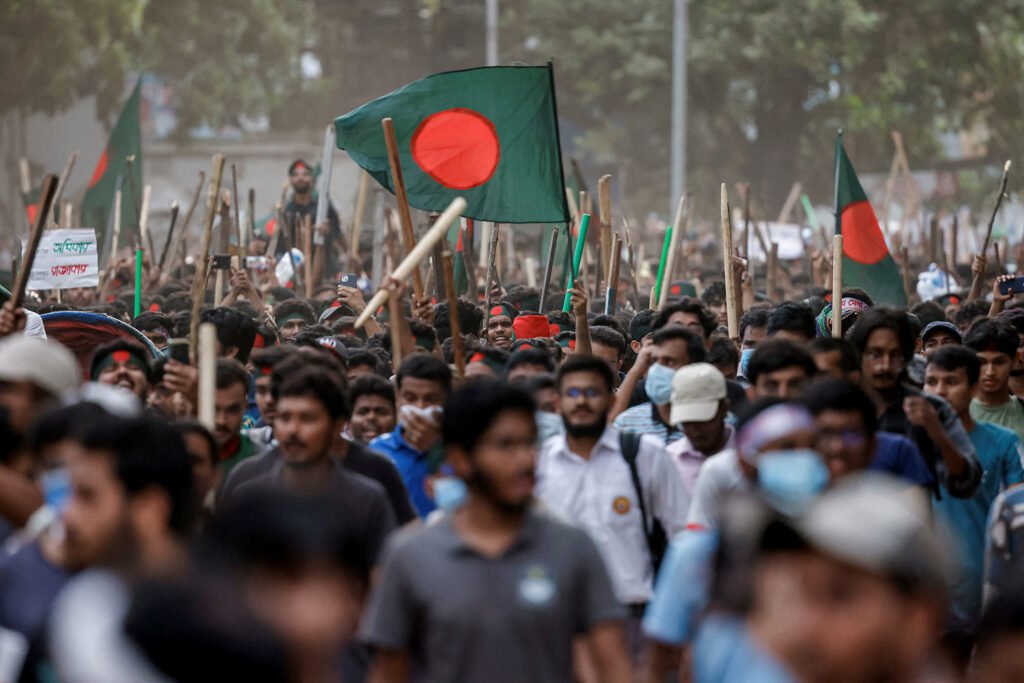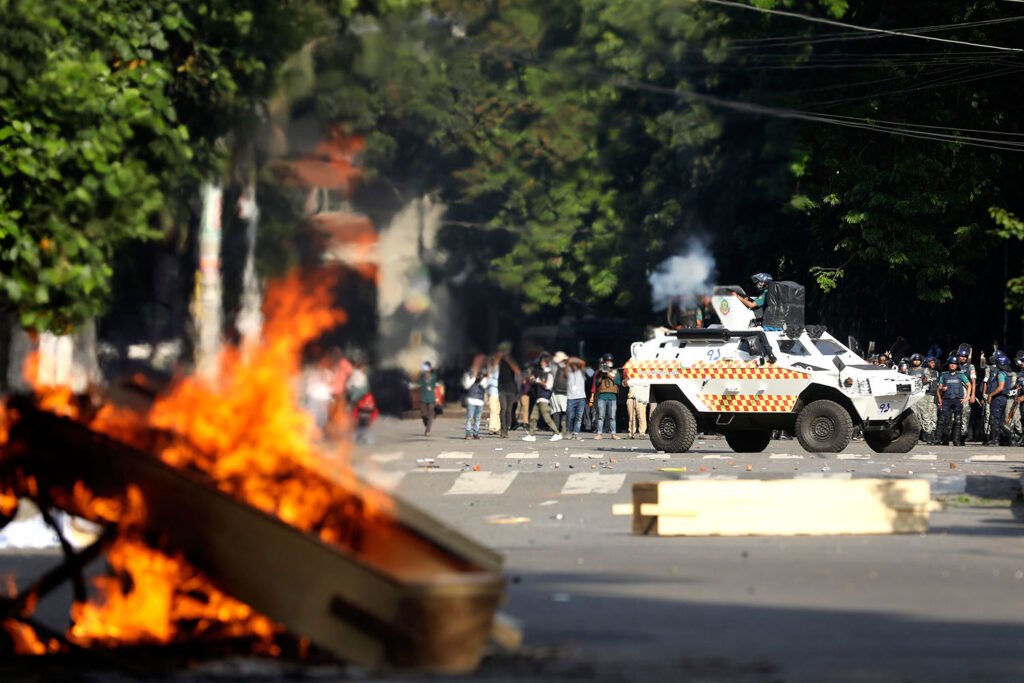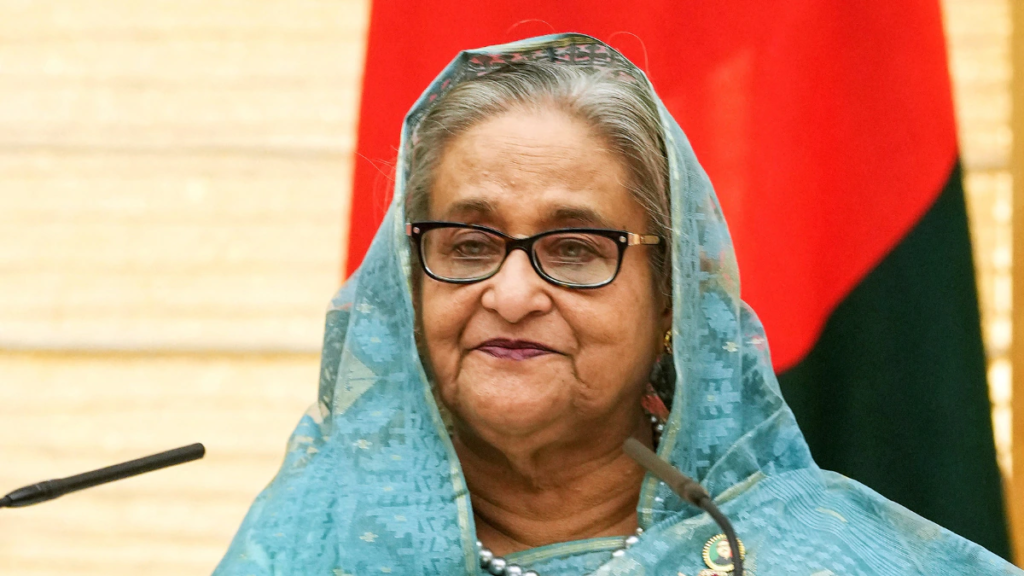Bangladesh on Fire: A Youth-Led Uprising Against the Hasina Government
Bangladesh is in turmoil as waves of protests, initially triggered by anger over a reinstated quota system for public sector jobs, have erupted into a nationwide movement against the Awami League (AL) government led by Sheikh Hasina. What started as peaceful student protests quickly escalated into violent clashes after authorities deployed police and paramilitary forces to crack down on demonstrators, leading to the deaths of at least 170 protestors, with thousands more injured or detained. Amidst an internet blackout imposed by the government, the movement has only grown, transforming into a larger struggle against state repression, corruption, and economic inequality.
The quota system that sparked these protests allocates 56 percent of public sector jobs to certain groups, including descendants of “freedom fighters” from Bangladesh’s independence struggle. Students argue that this system primarily benefits loyalists of the AL, allowing the ruling party to reward supporters while excluding qualified individuals. The students’ call for merit-based employment quickly struck a chord with the broader public, especially as unemployment and inflation have reached critical levels. For many Bangladeshis, this movement has become a rallying cry for justice and a call to overthrow a government they view as corrupt and autocratic.
A Brutal Crackdown and Rising Martyrs
The government’s response has been severe. On Thursday, security forces launched an extensive operation to dismantle protests, deploying troops to campuses and major city centers under the cover of a communications blackout. Tear gas, baton rounds, and live ammunition were used against unarmed protestors, turning universities and public spaces into battlegrounds. Despite the blackout, images and stories of state brutality have circulated, including reports of government helicopters firing on crowds and protesters retaliating by storming police stations and government buildings.
This crackdown has only fueled public anger. In a nation already grappling with severe economic disparities, the violent suppression has exposed the government’s willingness to use force to silence dissent. Many see the actions of the AL-affiliated Chhatra League, a group accused of harassing and attacking protestors, as evidence of the government’s intent to retain power at all costs. For the protesters, the loss of lives has turned their fight into a struggle not only for job equity but for fundamental freedoms and an end to a regime they deem tyrannical.
International Solidarity Amidst Blackouts and Misinformation
While the Hasina government maintains control over local media, preventing news from reaching the public and spreading disinformation, news of the atrocities has leaked through diaspora communities. From London to New York, members of the Bangladeshi diaspora have organized protests, drawing attention to the plight of their homeland. In the Middle East, Bangladeshi workers have also risked reprisals to stand in solidarity, with some protestors facing deportation or arrest.
Despite these efforts, the international response has been largely muted, with capitalist governments appearing reluctant to condemn Hasina’s government. Critics argue that the silence of Western powers stems from the fact that Bangladesh has been a compliant partner to global financial institutions, implementing IMF-backed economic policies and maintaining a low-cost labor force for the apparel industry. This lack of condemnation has only emboldened the protesters, who are now calling for solidarity from workers and students worldwide, hoping that their movement will inspire global support for a broader fight against capitalism.
Toward a General Strike and Structural Change
As the movement expands, leaders are calling for a national general strike to bring the country to a halt. Protestors have set up pickets at university campuses, demanding not only the abolition of the quota system but also the resignation of the Hasina government and justice for those killed in the protests. The Anti-Discrimination Student Movement, a body coordinating the protests, has issued statements refusing negotiations with the government until their demands are met, calling for disarmament of the Chhatra League and withdrawal of security forces from the streets.
Organizers emphasize that for the movement to succeed, it must unify students, workers, and the wider population into a collective force capable of challenging the state. Calls are being made to establish committees within universities, workplaces, and neighborhoods, connecting people at every level and creating a structure for self-defense and solidarity. Only by bringing in broader segments of the population, including the labor force, can the movement hope to counter the government’s efforts to maintain control.


A Vision for a New Bangladesh
At its core, this movement is not simply about the removal of one administration or reforming a flawed job system; it’s a call for a new system of governance in Bangladesh. Protestors argue that only a revolutionary shift away from the current capitalist framework can address the deep-rooted issues of economic disparity, corruption, and repression. The demands extend beyond government reform, encompassing a radical restructuring of the economy to ensure public ownership of essential industries and equitable distribution of wealth.
This uprising has made it clear that Bangladesh’s youth and working class are no longer willing to accept a system that prioritizes elite interests over the needs of the people.

With economic hardship at an all-time high, the public’s faith in the government has eroded, and a new model — one rooted in socialist principles and led by the masses — is seen as the only viable path forward. As the nation watches and waits, the future of Bangladesh hangs in the balance, with the possibility of true change resting in the hands of its people.

